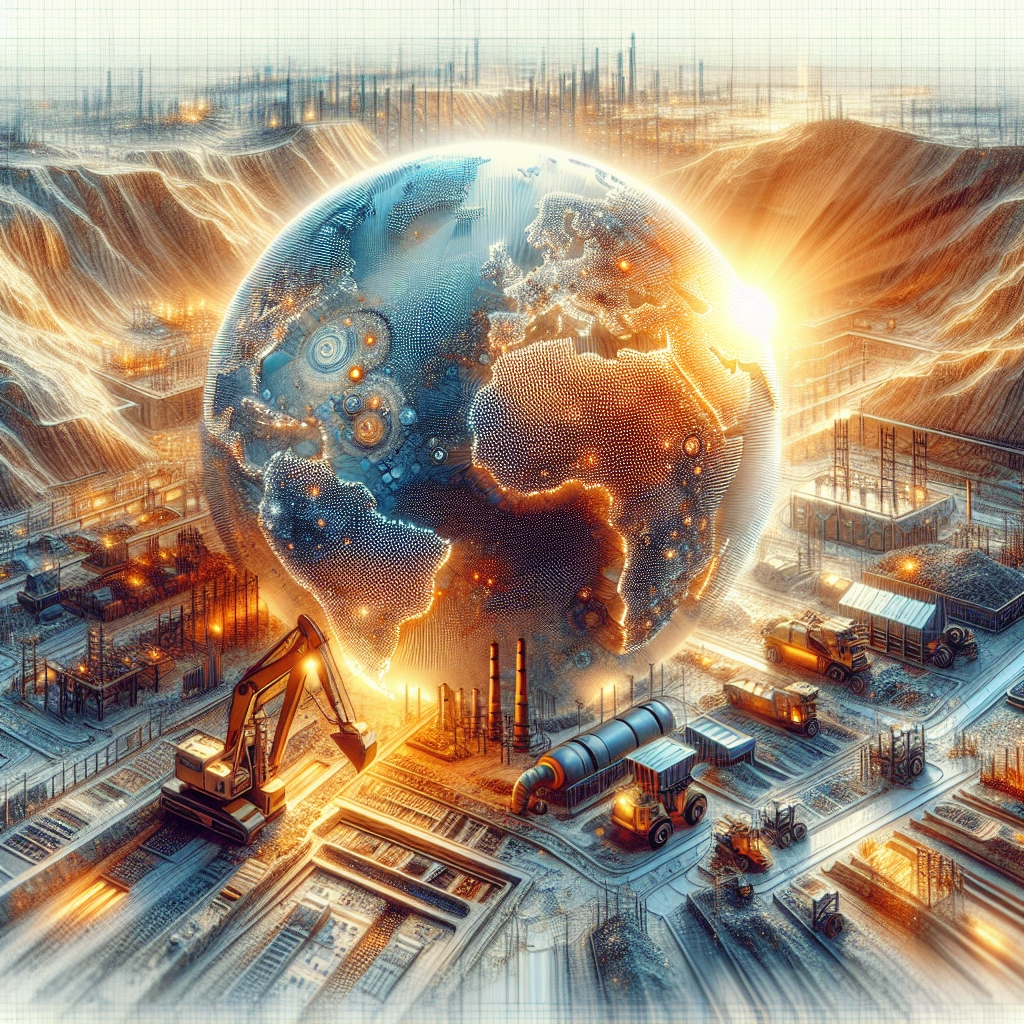In recent years, the demand for rare earth minerals has surged, driven by technological advancements and the growing need for sustainable energy solutions. These minerals, which include elements such as neodymium, dysprosium, and lanthanum, are critical in the production of high-tech devices, electric vehicles, and renewable energy technologies. This article explores the global trends in the mining of rare earth minerals, focusing on their significance, the challenges faced in their extraction, and the future outlook for the industry.
Chapter 1: The Significance of Rare Earth Minerals
Rare earth minerals are a group of 17 elements that play a pivotal role in modern technology. They are not actually rare in terms of abundance in the Earth’s crust; rather, they are rarely found in economically exploitable concentrations. The significance of these minerals can be understood through their applications across various industries:
- Electronics: Rare earth elements are essential in the manufacturing of smartphones, tablets, and computers. They are used in components such as magnets, phosphors, and catalysts.
- Renewable Energy: The transition to renewable energy sources has increased the demand for rare earth minerals. For instance, neodymium is crucial for the production of powerful magnets used in wind turbines and electric motors.
- Defense and Aerospace: Rare earth elements are vital for military applications, including precision-guided munitions, radar systems, and advanced communication technologies.
- Automotive Industry: The rise of electric vehicles (EVs) has led to a significant increase in the demand for rare earth minerals, particularly for batteries and electric motors.
The growing reliance on these minerals has made them a focal point for governments and industries worldwide. Countries are now recognizing the strategic importance of securing a stable supply of rare earth elements to maintain technological competitiveness and energy independence.
Chapter 2: Challenges in the Extraction of Rare Earth Minerals
Despite their importance, the mining and extraction of rare earth minerals face numerous challenges. These challenges can be categorized into environmental, economic, and geopolitical factors:
- Environmental Concerns: The extraction of rare earth minerals often involves environmentally damaging processes. Mining operations can lead to soil degradation, water contamination, and habitat destruction. The processing of these minerals typically generates toxic waste, which poses significant risks to local ecosystems and communities.
- Economic Viability: The economic feasibility of rare earth mining is influenced by fluctuating market prices and the high costs associated with extraction and processing. Many rare earth deposits are located in remote areas, making transportation and infrastructure development challenging. Additionally, the market is often dominated by a few key players, leading to price volatility.
- Geopolitical Tensions: The global supply of rare earth minerals is concentrated in a few countries, with China being the largest producer, accounting for over 60% of the world’s supply. This concentration creates vulnerabilities in the supply chain, as geopolitical tensions can disrupt access to these critical resources. Countries are increasingly seeking to diversify their sources of rare earth minerals to mitigate these risks.
Addressing these challenges requires a multifaceted approach, including the development of sustainable mining practices, investment in recycling technologies, and international cooperation to ensure a stable supply chain.
Chapter 3: The Future Outlook for Rare Earth Minerals
The future of rare earth minerals is shaped by several key trends that are likely to influence the industry in the coming years:
- Technological Innovations: Advances in mining and processing technologies are expected to improve the efficiency and sustainability of rare earth extraction. Innovations such as bioleaching and hydrometallurgical processes may reduce the environmental impact of mining operations.
- Recycling and Circular Economy: As the demand for rare earth minerals continues to rise, recycling efforts are gaining momentum. The development of a circular economy, where materials are reused and recycled, can help reduce the reliance on primary mining and minimize environmental impacts.
- Diversification of Supply Sources: Countries are actively seeking to diversify their sources of rare earth minerals to reduce dependence on a single supplier. This includes exploring new mining projects in regions such as North America, Australia, and Africa, as well as investing in partnerships with other nations.
- Government Policies and Regulations: Governments are increasingly recognizing the strategic importance of rare earth minerals and are implementing policies to support domestic production and reduce reliance on imports. This includes financial incentives for mining companies and investments in research and development.
In conclusion, the mining of rare earth minerals is at a critical juncture, with growing demand driven by technological advancements and the transition to renewable energy. While challenges remain, the future outlook for the industry is promising, with opportunities for innovation, sustainability, and diversification. As the world continues to evolve, the role of rare earth minerals will undoubtedly remain central to the development of modern technologies and the pursuit of a sustainable future.

